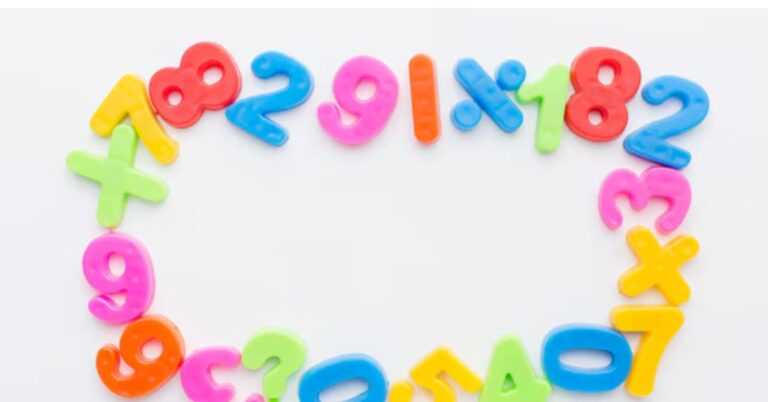Exploring the Significance of 33.7/14.44: Mathematical and Practical Insights
In the realm of numbers, sequences, and ratios, certain figures tend to capture attention due to their unique properties and potential applications. One such intriguing ratio is 33.7/14.44, which stands out as an interesting combination of numbers that invites exploration from both a mathematical and practical perspective. In this article, we will delve into the significance of this ratio, its implications, and potential applications across various fields such as mathematics, science, and even daily life.
What is 33.7/14.44?
At its core, 33.7/14.44 is a simple ratio. When you divide 33.7/14.44, the result is approximately 2.33. However, this ratio might carry additional significance in specific contexts, such as statistical analysis, engineering, and even certain cultural interpretations.
But before we dive deeper into its potential relevance, let’s start with a basic understanding of what a ratio represents. A ratio is a relationship between two numbers that expresses how many times the first number contains the second. Ratios are commonly used in various fields, including mathematics, finance, physics, and even social sciences, to compare values and understand proportions.
Mathematical Perspective of 33.7/14.44
From a purely mathematical standpoint, the division of 33.7/14.44 yields the number 2.33. While the simplicity of this result might not seem noteworthy, it can open up discussions in areas such as approximation, measurement precision, and numerical analysis. In practical terms, ratios like these are used to compare two quantities, and they can be particularly useful when working with proportions or scaling values.
For instance, if you are calculating the efficiency of a machine, the ratio of input to output could be expressed as a number similar to 33.7/14.44, where you compare the total output (33.7 units) to the energy or resources consumed (14.44 units). The resulting ratio would give a measure of the machine’s efficiency, and in this case, it indicates that for every 14.44 units of input, the machine outputs 33.7 units, a performance measure of approximately 2.33 times greater.
Moreover, the result of 2.33 can be rounded to different levels of precision, depending on the context. For example, in financial contexts, the number may be rounded to 2.3 or even 2, depending on the required level of accuracy. This ability to work with significant figures is essential in science and engineering when dealing with measurements and performing calculations.
Scientific Applications of 33.7/14.44
Ratios like 33.7/14.44 have practical applications in various scientific disciplines. One area where ratios are heavily utilized is in physics, particularly in the study of motion, energy, and efficiency. In thermodynamics, for example, ratios are used to express the relationship between heat energy input and the work done by a system. The ratio of 33.7/14.44 could represent an example of energy efficiency in a system where the output energy (33.7 units) is much higher than the input energy (14.44 units), indicating high performance.
In chemistry, ratios are used to represent concentrations and stoichiometric relationships in chemical reactions. If, for instance, you were mixing two substances and the ratio of one substance to the other was 33.7 to 14.44, the resulting mixture could be analyzed to understand its properties better. Such ratios are often simplified to a common factor, which can provide useful insights into reaction rates, concentrations, or other chemical behaviors.
Another field where such a ratio could play a role is biology, particularly in areas like metabolism or population dynamics. In biology, ratios help quantify how resources (such as nutrients) are utilized within an organism or a population. For instance, if a plant species produces 33.7 grams of oxygen for every 14.44 grams of carbon dioxide consumed, the resulting ratio would describe the plant’s efficiency in the process of photosynthesis.
Ratios in Engineering and Technology
In engineering, ratios such as 33.7/14.44 are integral to the design and analysis of various systems. For example, in the design of mechanical components or electrical circuits, engineers often work with ratios to calculate load-bearing capacities, energy consumption, and material strengths. The ratio of 33.7/14.44 could represent a system where engineers are comparing input power to output power in motors or turbines, where a higher ratio indicates better performance and energy efficiency.
In the world of electronics, such ratios also play a crucial role. Take the example of signal processing in communication systems. The relationship between signal strength (33.7 units) and noise (14.44 units) would be represented by a ratio that quantifies the quality of the signal. A ratio of 2.33 indicates that the signal is significantly stronger than the noise, which is essential for clear communication and high-quality data transfer.
Similarly, ratios like 33.7/14.44 may also be used in the calibration of instruments, in determining material properties, and in optimizing designs for cost-effectiveness, safety, and performance. Engineers often use these ratios to determine the right balance between different components of a system or product.
Social and Economic Significance of Ratios
While the ratio 33.7/14.44 might primarily have technical and scientific connotations, ratios like these can also have economic and social applications. In economics, ratios are frequently used to measure the performance of economies, businesses, and industries. For example, a company may use ratios like this to measure profit margins or return on investment (ROI). If a business earns 33.7 units of revenue for every 14.44 units of investment, the result (2.33) could be used to assess the company’s profitability or the effectiveness of its investments.
Additionally, in social sciences, ratios are used to study demographic relationships, income disparities, and resource distribution. For example, the ratio of 33.7 to 14.44 might represent the distribution of wealth or access to resources across different populations. A ratio that is too high may indicate inequality, whereas a lower ratio might suggest a more equitable distribution.
Understanding the significance of such ratios in social and economic contexts can help policymakers and researchers make informed decisions about resource allocation, social welfare programs, and overall societal wellbeing.
Aesthetic and Cultural Perspectives on 33.7/14.44
Interestingly, ratios like 33.7/14.44 can also find their way into art and design. The concept of ratios is fundamental to aesthetic principles such as the Golden Ratio, which is often used in architecture, art, and nature to create visually appealing compositions. While 33.7/14.44 does not represent the traditional Golden Ratio, it still reflects the broader idea that numbers and proportions influence our perception of beauty.
In architecture, for example, architects may use ratios similar to 33.7/14.44 to determine the proportions of a building or structure. These ratios help ensure that the design is both functional and visually balanced, contributing to a space that feels harmonious to the human eye.
In graphic design, ratios are used to create layouts that are both visually striking and easy to navigate. The ratio of 33.7 to 14.44 could, for instance, determine the dimensions of a web page or printed media, balancing text and imagery in a way that is both aesthetically pleasing and easy for the viewer to process.
Conclusion
The ratio 33.7/14.44, which simplifies to approximately 2.33, might seem simple at first glance. However, upon further exploration, it becomes clear that such ratios hold significant value across a wide variety of fields. Whether in mathematics, science, engineering, economics, or art, understanding and utilizing ratios like 33.7/14.44 can lead to better analysis, design, and decision-making.
The exploration of ratios is not merely a theoretical exercise but a practical one that impacts our daily lives, shaping everything from technological innovation to social systems and artistic expression. As we continue to encounter numbers and proportions in various contexts, the ratio of 33.7/14.44 serves as a reminder of the power of simple relationships in understanding the world around us.







